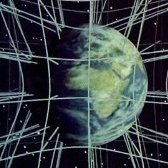Leaderboard
Popular Content
Showing content with the highest reputation on 01/05/21 in all areas
-
No. What actually happens is that the relationship between these frames in spacetime changes - clocks don’t “slow down”, and rulers don’t “shorten”, only the way they are related changes (in the case of SR, that’s mostly just a hyperbolic rotation in spacetime about some angle). All clocks always tick at “1 second per second”, and all rulers always measure “1 meter per meter”; its only when you compare two of these in relative motion, that you find that they no longer share the same concept of simultaneity, and thus that their frames are rotated with respect to one another. But because the laws of physics precisely are about relationships between events in spacetime, this has measurable physical consequences, which are quite real. Also no. Experiment and observation tell us precisely the opposite, namely that Lorentz invariance is a fundamental local symmetry of the world; this has been so thoroughly tested (see above) that it is beyond any reasonable doubt. Given this, spacetime has to be locally Minkowskian, which implies that the metric is invariant. Therefore the “number of events” - which is the geometric length of the clock’s world line in spacetime - is also invariant. It does not change and cannot change, and all observers agree on it - this is mathematical fact, and not subject to any “interpretations”. The only thing that changes with relative motion is the way two frames are related to one another.2 points
-
There are countless observations of natural selection in so called "higher organisms". Many feature as model organisms for natural selection - stickleback fish, toads, anoles, killifish, guppies, monkeyflowers, grasshoppers, Drosophila, jellyfish, lycophytes, to name a few. There are dozens of well known manipulative experiments that have comprehensively demonstrated natural selection in populations of relatively long lived, multicellular organisms, and thousands of population genetic studies on natural populations which do the same. Natural selection in modern humans is also directly observed. The best example that immediately comes to mind is the Framingham Heart Study. I think the concept that you're missing is that selection is dependent on population size. In small populations, genetic drift can overwhelm selection, leading to the loss of beneficial alleles and the fixation of deleterious ones. Conversely, the larger the population size, the lower the selection coefficient required to lead to fixation or extinction of a given mutation. https://www.nature.com/scitable/knowledge/library/natural-selection-genetic-drift-and-gene-flow-15186648/2 points
-
Looks like somebody trashed the memory crystals in Superman's Fortress of Solitude. No seriously … very nice !2 points
-
2 points
-
The microwave equivalent of a laser is called a maser. https://en.wikipedia.org/wiki/Maser2 points
-
I would say false. Evolution is a fact (we observe it and so can't deny it), and the Theory of Evolution describes the process. I don't think there's any need to elevate any theory to "fact" status. It implies that theory isn't strong enough when it certainly is, and we get to keep improving it if it stays a theory. I think it sends the wrong signal when we update "facts" based on new evidence. And welcome back!1 point
-
Or he showed a blueprint that an actual competent autocrat could use to seize power. Also note that a significant proportion of the US population that are part of the GOP or are GOP voters do not consider that crazy (70-80% believe that the elections were not legitimate, for example). Not sure if it considers wrecking, rather a long slide from the right into fantasy country. But I assume they will recover if Democrats will finally be nice to them.1 point
-
Of course. Science doesn't look at tests like this in terms of success/failure so much as opportunities for improvement. Exposing weaknesses in trials is a good thing, and part of the engineering process. Better to know now than to discover this problem when the payload is valuable. I sure hope you aren't here to promote one private space company while trashing the others. That's inconsistent with our purpose.1 point
-
Yes, time intervals are what we measure/observe. For this reason I said that time has a meaning when it's about time intervals. No disagreement here Regarding "time as a dimension" and its role in gravity: I'm not so convinced, probably because I don't know/understand enough. By the way, I admire your knowledge and the fact that you take the time to share it with us. I have some questions about spacetime (how/why exactly is warped around massive objects and why/how "the principle of extremal ageing" is imposed) but I don't want to hijack the thread, so don't answer this questions here if you think that this is not the right place.1 point
-
I agree with Prometheus that the answer to #1 is yes. Beyond that it would seem to me that how society and civilization would react would depend on the intentions of the entity. I don't think society would crumble or even change much in the long run if the entity just lived in solitude in Antarctica. Humans are incredibly resilient, I cannot believe how people are strive to maintain normalcy in places like Syria, Afghanistan and Yemen.1 point
-
Yes. Again, it depends on the culture. I can imagine something even as simple as ubiquitous automated driving would be well received and readily adopted in somewhere like Singapore, but rejected in many places in the US. Scale that up. I'm not sure that is true: most religions are predicated on the observation that on some level humans are not in control. Whether that manifests as a god/s being in control, or natural forces (to which humans are bound) is irrelevant - the idea exists in many systems of thought. Perhaps you mean human agency? I don't see that humans would necessarily give up this agency in light of a super-computer. Computers already play chess much better than all humans, but AFAIK that hasn't affected the numbers playing chess in the slightest. Nick Bostrom gives an account of this in his book Superintelligence in which he outlines several paths superintelligence could emerge and speculates that the most destabilising ones are one that emerges alone (i.e. the Chinese of Americans get the first, and so only superintelligence, as it can destroy all other attempts) and/or one that emerges so quickly that societies cannot react, either internally (emotional) or externally (putting in place laws) - we already see how slowly governments are responding to social media. The other scenario he warned of was an arms race to super intelligence in which AI safety (value uploading, goal misalignment, orthogonality thesis etc...) are ignored just to beat the competitors - which, i believe, is why open AI was founded.1 point
-
I don’t get your point, because that is precisely what we directly observe. When you observe an elementary particle come into existence and then decay, you have observed an interval in time (and in most cases also in space). Whether you can freely move in that direction or not is immaterial, as that ability does not form part of what makes a dimension. When you feel ordinary gravity holding you down, then this happens because of the principle of extremal ageing - objects tend to follow world lines that extremise proper time, so again this wouldn’t happen if time wasn’t part of spacetime. When a photon gets frequency-shifted along a radial trajectory towards Earth, then this happens only because the spacetime manifold has a time dimension - this is as real as space, because without the time dimension, there would be no tidal gravity (the Weyl tensor vanishes identically in 1,2,3 dimensions). And so on. On a more direct level, we know from experiment and observation beyond any reasonable doubt that the world has local Lorentz invariance as a fundamental symmetry - which would of course not be possible if time wasn’t part of spacetime. So saying time is real, but denying that it is a geometric dimension within spacetime, is both physically and mathematically meaningless.1 point
-
Many are likely withholding gratitude until they’re certain Trump will similarly withhold releasing troops into our streets to overturn an election he lost1 point
-
1 point
-
I’m disappointed. The thread title suggested this discussion would be far more risqué1 point
-
Yes to both. https://www.sciencealert.com/icarus-blue-giant-most-distant-star-ever-seen-hubble-9-billion-light-years#:~:text=When light passes through this gravitational field%2C it,dependent on exactly the right alignment of objects.1 point
-
Oh I think I know where the issue is. You are referring to the ingredient list, which actually has its own set of rules. I was referring to the nutritional labelling indicated by OP, which follows other rules and is mostly an indicator of nutrients. That part (i.e. the quantitative elements) are very superficial nutrient information in the outlined format above. With regard to blood glucose, the EU definition of sugars are mono or di-saccharides but excluding polyols. So polysaccharides such as starch, as Studiot pointed out, would fall outside that category. I know that in some countries dietary are included into carbohydrate section (e.g. Canada/USA) and others it is not. I am not sure how it is in the EU, but since the labelling indicates a separate category it seems that all fibres are excluded from that group, although most chemically are carbohydrates. Edit: I overlooked the part where tim.tdj actually said that the fibres are counted separately. I will say that the ratio from fibres and sugars seems to be bit off in the listed product. I was under the impression (i.e. friend with celiac disease told me) that coconut flour was fairly low on sugars (usually around 1:5 ratio).1 point
-
Hi Curious Layman, thanks for your interest! A patent costs a fortune (application +annual fees *many countries) and is only a proof you can show to a judge. If negotiating with a small company, an inventor has some chances to win a trial, so he can get paid for an invention or prevent its use. Against a multinational, procedure ruins an individual inventor before he gets the first cent. So big companies just steal the idea, neglect any patent, and save the money. I know this concretely: at a multinational employer, two colleagues and nevertheless friends worked full time to analyse the weaknesses of external patents and find ways to circumvent them, while a complete division sought how to come best out of trials, and more people sought how to resolve the cases outside legal procedures. You may hear and read about individual inventors getting rich from their ideas and patents, but this is truly rare. Nearly all lose a bunch of money in patents before giving up. ========== Creating a company: I tried long ago, after building the Sara satellite with friends in a club. It failed, and we got discouraged. More recently, I considered building the sunheat engine in Luxembourg with the help of a governmental funding. Thinking more at it, I saw basic flaws in the activity model: development costs <1M€, but the in-space proof costs 6M€ and may very well go wrong, while the first customers probably need 5 years to decide and longer to pay. I'd have put much work in a company that would fail. That's why I finally described on this forum how to develop the sunheat engine. Basically, I describe for everyone ideas I don't plan to develop by myself, mainly because they cost too much. I keep very few for myself, like some music instruments. Yes, I'd like to live from my inventing and engineering activity, for instance at a company. France makes that more difficult. I could work once outside France, it was in Bavaria.1 point
-
The rules are quite complicated, as you might guess. Simply put, the basice rule is that every ingredient, except water, must be listed in order of %age composition. So if it's in there, it must be stated. I don't think actual values need be stated, but I would not think much for the reputation of a producer that wouldn't do this. However something described as say beef stew must have more beef in it than anything else ie beef must be the largest single ingredient. The complication comes where there are statutory regulations requiring the inclusion of a certain substance eg B vitamins in bread. Or the regulations may require a minimum content as in pork sausages. In these cases our good government assumes that everybody knows all the regulations, therefore there is no need to print them. So if your 11.1g of non sugar and some of it it was not starch they would have to tell you what it was since edible food ingredients don't contain other carbohydrates, such as the aldehydes chenbeier listed. Do you have reason to believe there is something nasty in it ?1 point
-
In the UK they would have to tell you, though many EU and other foreign suppliers have been allowed to get away with inadequate food labelling in recent times. If you are interested in what is in food and what sensible explanations of the terminology here are two books I recommend. 1) The current version of The Manual of Nutrition, published by Her Majesty's Stationery Office (HMSO) Lists official tables of contents/ingredients per 100g and per Kcal and provides a few pages of text explaining technical terms. 2) What Are you Eating ? The food fact file by Isabel Skypala Again UK practice, but the tables are much more comprehensive and includes many branded products. Isabella is a dietician and, as might be expected, offers more detailed advice in comparing.1 point
-
I hope you noticed that the %ages do not add to 100% ! This is because suppliers in the UK are not required state explicitly the water content of foodstuffs. Also the carbohydrate is often split into sugar and starch, with only one declared, so we have Starch = Total carbs 27.2 - Sugars = (27.2 -16.1 ) g Your list also includes a lot of 'fibre'. Now fibre covers a number of substances, some edible, some inedible. Of that fibre most foods have fibre as "non starch polysaccharides" or NSPs. NSPs are chemically also carbohydrates, some of which are edible (eg pectins) some are not (eg cellulose). But some foods, and I think coconuts come into this category, have fibres material that are not strictly carbohydrates So there is this category Fibre which crosses over with the Carbohydrates category. So your lineup is Fat 11.3 Sugars 16.1 Starch 11.1 Fibre 36.5 Protein 15.8 Minerals 02.6 Total 93.4 So the remaining 6.6% must be water. You might like to compare this with standard bread flour which is kept to 14% North Dakota State University has an analysis unit who might have also done coconut flour https://www.ndsu.edu/faculty/simsek/wheat/flour.html If you are interested you might like to email them. So there are no 'missing' carbohydrates in your coconut flour, though some definitely are included under the fibre heading, not the carbohydrate heading. Please also note that if you do a web search to look for water content of foodstuff, using 'moisture' is a better search word than 'water' as 'water' will return mostly recipe information of how much to add in cooking.1 point
-
The kinetic energy would be 1/2 mv^2 Mach 8 is 2744 m/s If that's at elevation, yes there will be more energy owing to the potential energy, but it's 2 x 10^6 joules/meter, which is small compared to the KE and, as you say, some will be lost to air resistance 7.5 x 10^11 Joules, or 0.18 kilotons of TNT equivalent, or ~1/83 of the Hiroshima bomb yield1 point
-
Mach 8 is going to be above the terminal velocity, so assuming it's no longer is powered, it will be slowing down regardless of angle of descent.1 point
-
Some are even smaller. Cubesat is one type, falling under the informal “picosatellite ” category of small satellites https://en.wikipedia.org/wiki/CubeSat (edit: xpost with Ghideon) More info on the groups: https://en.wikipedia.org/wiki/Small_satellite#Classification_groups1 point
-
Time does exist, like temperature, pressure, the word time and so on, because we defined them. Space is real because we can move left-right, forward-backward and up-down. In "time" we can't move backward, so it's not as real as the space. Time has a meaning when it's about time intervals, like distances in space. Time as a dimension has less or no meaning. Yes. You can find in this forum my alternative theory, based on dark matter. It is intuitive, it is in agreement with the experiments/facts and it offers new experiments, able to prove it.-1 points











